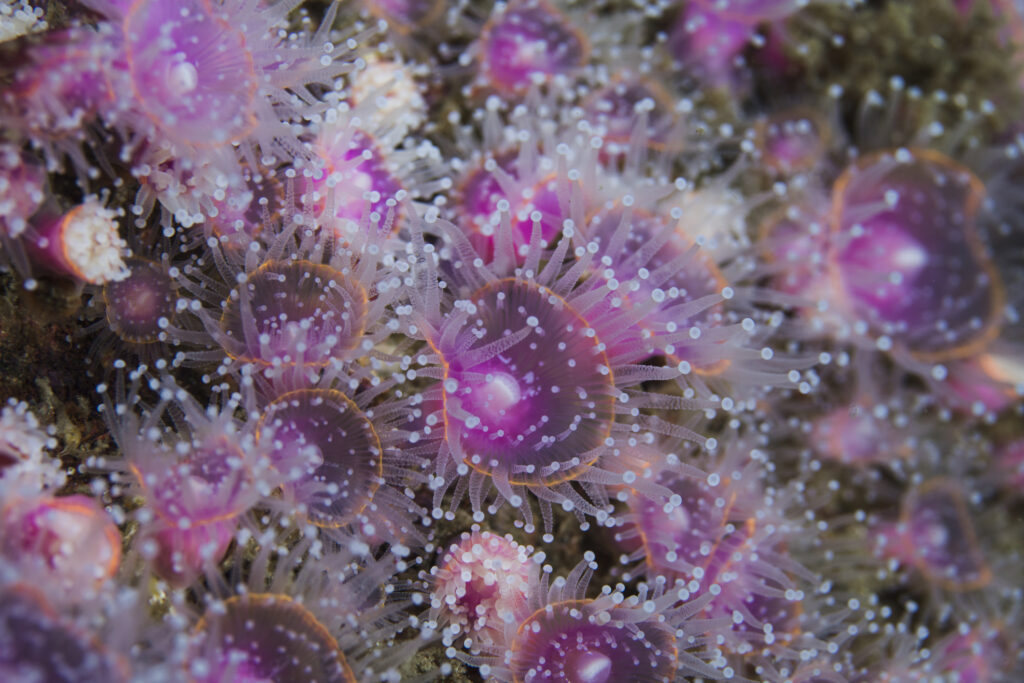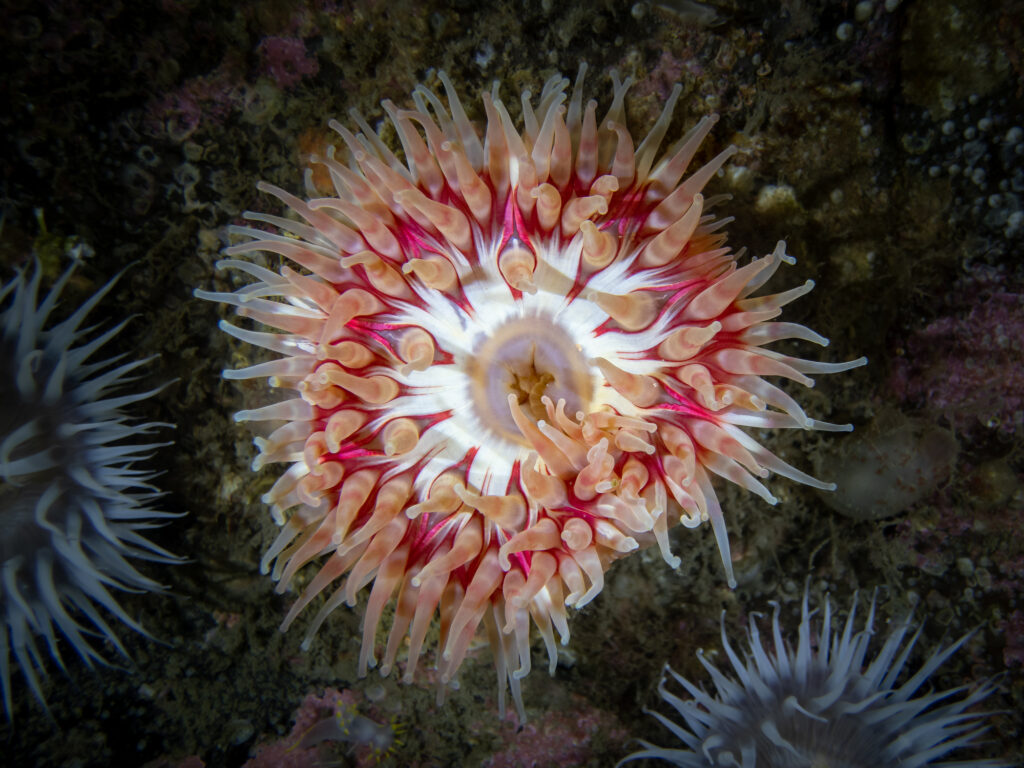To the untrained eye, sea anemones seem to have a fairly simple anatomical structure, but there’s much more than meets the eye with these ocean-dwelling creatures. Luckily, we’re here to give you an expert run-down on everything you need to know about their anatomy, from the tips of their wiggling tentacles down to their foot-like pedal discs.
What is a sea anemone?
Because of the tentacles, you might assume that anemones are plants at first glance, but this isn’t true. Anemones – or Actiniaria as they’re known in the scientific world – are a type of marine animal rather than a plant. These invertebrates lack a backbone and have soft bodies, with their closest relatives being jellyfish and coral. Sea anemones also don’t have brains, and their movements are instead controlled by a decentralised nervous system.
Anatomy of a sea anemone
Coming in all shapes, sizes and colours, sea anemones are experts at variation. Despite the obvious differences between species, though, they all share the same anatomy, which we’ll explore in more detail below.
Pedal disc
Also referred to as the basal disc, this part of a sea anemone essentially acts like a foot and helps these creatures stick to surfaces or navigate rocky areas if they prefer staying in shallow waters. As well as providing them with stability, the pedal disc also allows them to choose a home in a suitable marine environment.
Cylindrical body
Their cylindrical, tube-like bodies are known are polyps, and these are characteristic of their closest invertebrate relatives too. All the other parts of a sea anemone are attached to the polyp.
Mouth
At the top of the polyp is a centralised mouth or oral disc, which also functions as an anus since they have incomplete guts! This means that waste and undigested matter that went in through the mouth also go back out the way they came in.
Sea anemones can only use their tentacles to transport food to their mouths, but we’ll get to that in the next bit…

Tentacles
Their tentacles are one of the main reasons that they’re often mistaken for plants. These can range from pinks and purples to oranges and blues, but they serve the same purpose regardless of the exact species. This part of their anatomy is highly reactive and can inject harmful venom into unsuspecting prey passing by too closely. The tentacles are also responsible for detecting prey, catching it and pulling it to the mouth of the anemone since they lack eyes or ears to help with this process.
Fun fact: Clownfish are the only species known to have an immunity to the stinging tentacles of anemones thanks to their mucus-covered scales, which is why they often take shelter and protection from the tentacles. In return, clownfish often offer scraps and leftovers for the anemones.
Types of sea anemone
Over 1000 different types of anemones are known to exist in the world’s waters, including the waratah anemone (Actinia tenebrosa) commonly found off the shores of Australia, the green bubble-tip anemone (Entacmaea quadricolor) living in the Indo-Pacific region and the venus flytrap sea anemone, only found in the deep ocean in the tropical western Pacific.
Several sea anemone species, such as the snakelocks anemone, beadlet anemone and strawberry anemone, can also be found around the UK. These types of anemones tend to prefer cooler temperatures than some other species and are often spotted on rocky shores close to the coastline. Their preferred habitats can influence the size, colour and shape of the anemone.
Spot sea anemones at Hastings Aquarium
At Hastings Aquarium, our Native Zone exhibit is home to several exciting anemone species, including the following:
Beadlet anemone
Beadlet anemones (Actinia equina) have a distinctive red appearance, which makes them easy to spot in the rockpools they inhabit around the UK. They get their name from the vibrant blue beads underneath each tentacle, which pack a nasty sting used to ward off other anemones and protect their territory.

Dahlia anemone
Also found on the rocky shores up and down the UK, dahlia anemones (Urticina feline) are a beautiful species named after the dahlia flower. While they’re often spotted in hues of pinks, purples, yellows and oranges, these sea anemones are masters of disguise since they have special wart-like structures on their bodies that sand, shells and gravel stick to. This keeps them camouflaged from any predators or other danger.
Bubble-tip anemone
As the name might suggest, many bubble-tip anemones (Entacmaea quadricolor) have bubble-like tips lining their tentacles. This species is more widespread than others, with some being found as far north as the southern UK shores and others being spotted in the Indo-Pacific. They’re most well-known for their bright, iridescent colours, which definitely help you identify them easily.
Jewel anemone
A real sight to behold, the jewel anemone (Corynactis viridis) comes in an array of colours, each of which looks like it’s topped with tiny jewel stones. They actually have closer relations to corals than they do with many other sea anemone species.
This species also reproduces asexually, which means a single polyp will split into two for mating purposes. When this happens, a patchwork effect can be created by all the different colours.
Snakelocks anemone
The snakelocks anemone (Anemonia viridis) is native to the waters around the Western UK and the English Channel, which means you could even spot them near Hastings! This species is characterised by its unusually long green and purple tentacles, which it rarely retracts.
Strawberry anemone
Named after their resemblance to strawberries, strawberry anemones (Actinia fragacea) have a red polyp covered in green spots and red tentacles. These anemones can be found in rockpools around the UK, similar to the beadlet anemone, only slightly larger.
Come along to Hastings Aquarium, where you can learn more about sea anemones and plenty of other marine creatures.
